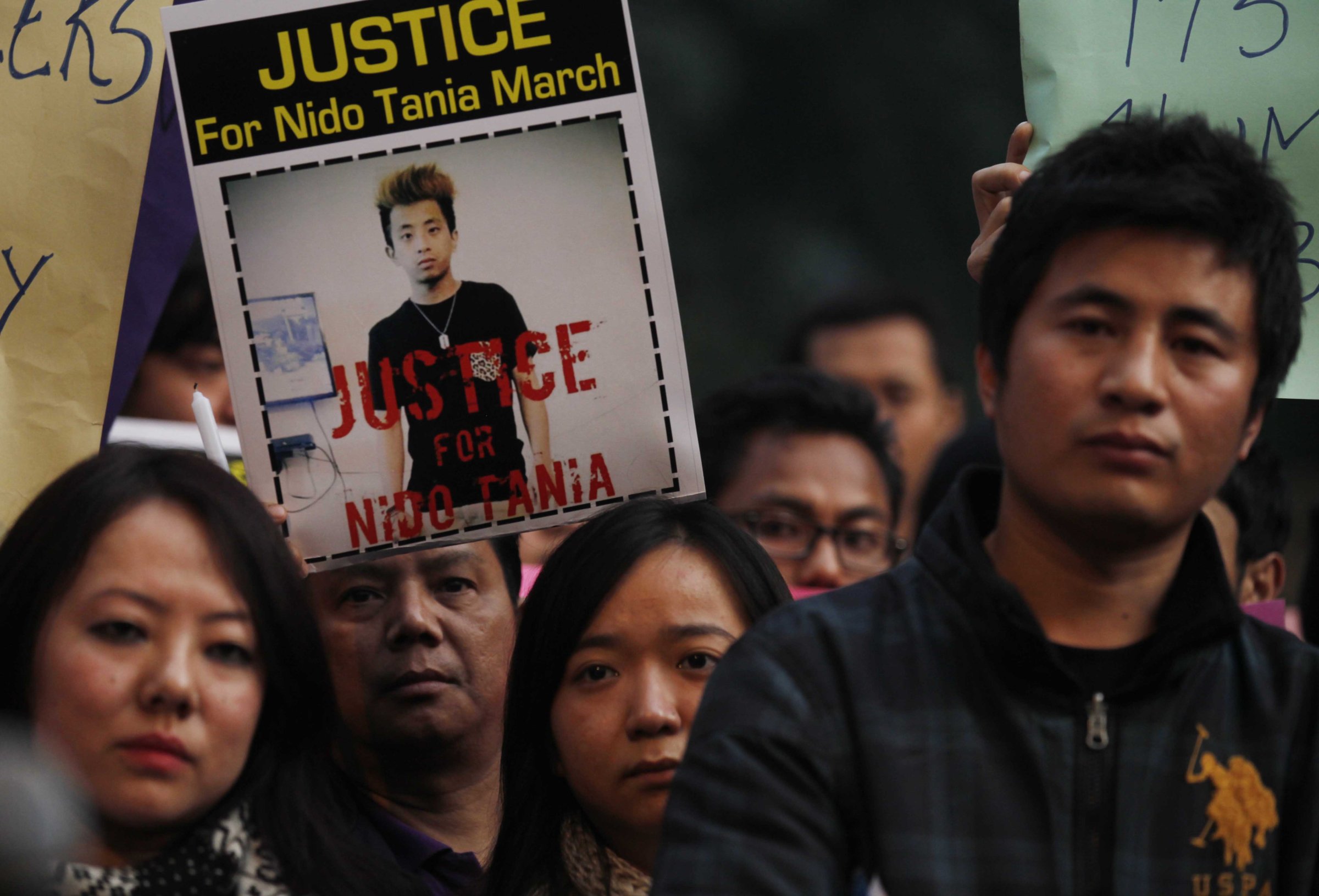
Nido Taniam was a young man from Arunachal Pradesh in northeastern India. The son of a state legislator, Taniam was like 20-year-olds anywhere, with his trendy haircut and love of music. Last Friday, he stopped at a shop in a market in Delhi, to ask for directions. The shopkeeper and his friends made fun of Taniam’s hair and clothes and a brawl began. It ended with Taniam’s death.
This wasn’t a senseless fight over a haircut, however. It was Taniam’s East Asian features that marked him out for attack and his death highlighted the racism that many from India’s beautiful but impoverished northeastern states are subjected to.
While not every incident ends in such a horrific manner, assaults on young men from the northeast are commonplace in Delhi. Alana Golmei, founding member of the Northeast Support Centre and helpline, says she gets half-a-dozen distress calls a week. “This was waiting to happen,” Golmei told TIME.
It isn’t just physical differences that make people from the northeast stand out in a big city like Delhi. The fact that they hail from societies that are culturally more permissive than mainstream India highlights their otherness in the eyes of other Indians. A series of separatist insurgencies being waged by the indigenous peoples of the northeast also exacerbates tensions. Then there’s the fact that the northeast is geographically distinct from the rest of the country, connected to it by just a narrow strip of land known as the Siliguri Corridor.
“The identity of an Indian man [or woman] is culturally defined and anyone who doesn’t fit that mold is an outsider,” says Pradip Phanjoubam, a fellow at the Indian Institute of Advanced Study. “Once you are out of the northeast, you have to renegotiate the question of being an Indian as physically the northeast is a part of India but culturally it isn’t.”
In recent years, young people from the northeast — about 15,000 a year — have been making their way to the capital, fleeing the insurgencies and looking for better education and work opportunities. Casual racism is commonplace. They are derided as “Chinkies” (a reference to single-fold eyelids) or “bahadur” (a common term for Nepalese male servants in India).
The authorities have been ineffective in assimilating this new, ethnically and culturally distinct population. In 2007, the Delhi police published a much-criticized booklet, advising migrants from the northeast to avoid wearing revealing clothes and to not cook their native foods, such as bamboo shoots and fermented soy beans, for fear of upsetting Indian neighbors with unfamiliar smells. In 2011, the home affairs ministry made the use of hate-speech like “Chinky” punishable with five years in jail. Enforcement, naturally, is impossible, and legislation without the propagation of a multicultural and multiethnic view of India is meaningless.
“Societies do not change on their own,” says Ranjana Kumari, director of the Delhi-based Centre for Social Research. “We need to create conditions for this change, which includes identifying groups and areas that are perpetrating these kind of hate attacks.”
Taniam’s death might yet prove to be a flash point in addressing the problem. It certainly prompted an unprecedented show of concern from politicians. Congress vice president Rahul Gandhi and Delhi chief minister Arvind Kejriwal joined protests at Taniam’s killing on separate days, and Gandhi pledged to ensure that people from the northeast get “respect in this country.”
To people like Golmei, that respect cannot happen until mainstream Indian society acknowledges the racism deep within it. “Unless we recognize it and talk about it,” she says, “it’s not going to stop.”
More Must-Reads from TIME
- Cybersecurity Experts Are Sounding the Alarm on DOGE
- Meet the 2025 Women of the Year
- The Harsh Truth About Disability Inclusion
- Why Do More Young Adults Have Cancer?
- Colman Domingo Leads With Radical Love
- How to Get Better at Doing Things Alone
- Michelle Zauner Stares Down the Darkness
Contact us at letters@time.com